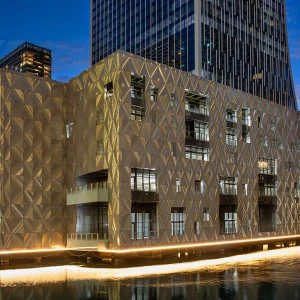Like it or not, if you live in London you’re going to have to get used to the site of tall buildings. Already home to Western Europe’s tallest skyscraper, The Shard, London is fast becoming a ‘vertical city’ with new buildings including The Walkie-Talkie and the Cheesegrater jostling shoulder to shoulder with old stalwarts such as the Gherkin.

And there are more, many more, on the way. A recent survey by think tank New London Architecture (NLA) and GL Hearn, released at MIPIM, found that there are at least 236 towers above 20 storeys currently planned for the London. So what do Londoners really think about these tall buildings?
Well, a new survey, also by NLA, has asked them. Timed to coincide with the exhibition London’s Growing Up! The rise and rise of London’s tall buildings, the survey, which was done in conjunction with Ipsos MORI, set out to establish how Londoners really feel about the increasing number of tall buildings planned for their capital.
When asked to consider the number of tall buildings in London relative to the 23 built in the past five years, 45 per cent felt that tall buildings had improved the London skyline, while 40 per cent disagreed that there are too many tall buildings in London.

30 St Mary Axe, better known as The Gherkin. © Grant Smith / View
The Norman Foster-designed 30 St Mary Axe, better known as the Gherkin, was chosen as Londoners’ favourite building with 36 per cent from a selection of 13 tall towers. Western Europe’s tallest building, The Shard, ranked in second place and newcomer to the
London skyline The Leadenhall Building (nicknamed the Cheesegrater) ranked third.
The historic Barbican was chosen as Londoners least favourite tall building, reflecting perhaps, the continuing unpopularity of brutalism as an architectural style.

Barbican, London. Picture: © Lee Mawdsley
Whether the design fits in with the London skyline topped the list of Londoners’ priorities when constructing new towers. 53 per cent chose this as their highest or second highest priority.
Design and affordability were also priorities, 35 per cent chose whether it has good design and 32 per cent felt affordable housing was a necessity in new towers.
Young Londoners’ let design take a backseat than the older demographic with their priorities focused on whether the new towers could offer new job opportunities.
Surprisingly (or perhaps not), the results indicate that men and women feel differently about tall buildings: while most Londoners didn’t aspire to live in tall buildings, young men proved the most likely to want to live in towers but were still heavily outnumbered by those not wanting to move upward. The figures also showed that seven out of ten over 34-year-olds were unwilling to live in the high-rise towers.
When it came to work, however, 61 per cent of Londoners were happy to work in tall buildings, rising to 72 per cent among the younger demographic.





